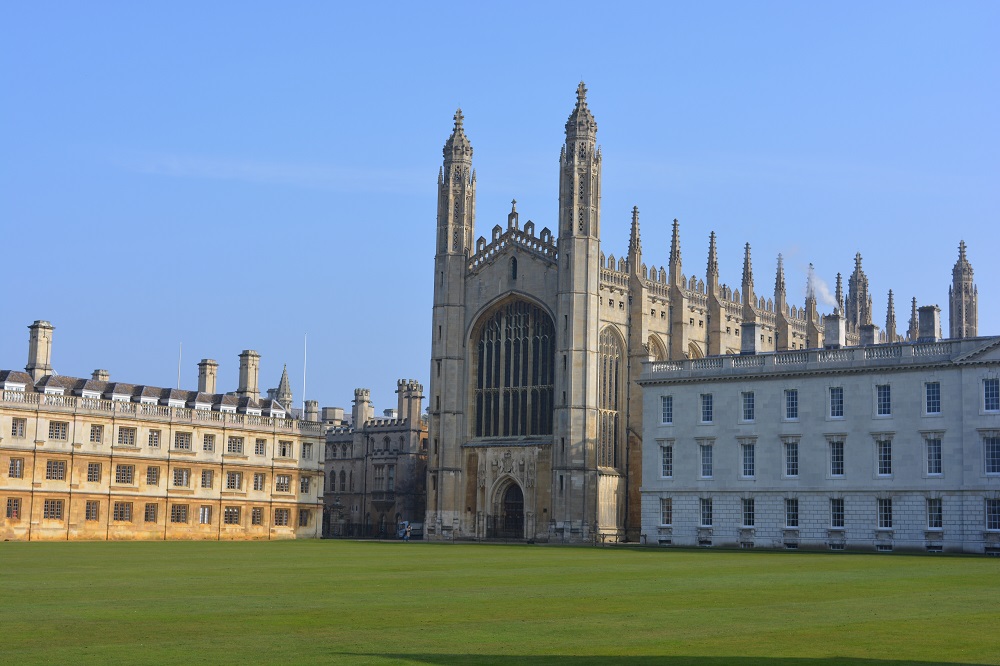Have you ever considered why Finland is the most prestigious education system around the globe? Finland’s most acclaimed education system has meticulously curated an infrastructure for academics and education equal to all other nations globally. Sweden, Norway, and Russia surround it by land and Estonia by sea. The country is home to a distinct blend of nature and modern, with its clean and contemporary cities dotted with coniferous trees outdoors. The government is gaining recognition as an innovator in education. Finland’s Finnish educational system is said to be the first to crack the code of providing quality education and embracing the concept of never-ending learning. In this blog, let’s look at what makes Finland’s education system unique and how it’s designed.
Finland Education System Ranking
Finland is, in no doubt, among the most desirable countries to study. Let’s look at some of the awards Finland has received.
- Finland is the 8th highest educated nation in the world.
- In the ranking of education by country, Finland has a score of 1.631K, placing it at the 3rd spot in 2021.
- Finland is the country with the top position in High School Completion Rate.
- The World Economic Forum’s Global Competitive study ranks Finland as the nation with the highest quality education system in the world.
Finland’s Finnish education system was not always this way. If we look back in the past, it was almost 50 years ago when the Finnish government re-examined the education system and incorporated more progressive but not tested reforms that would prove vital in the years to come. The entire system was revamped from primary education to the higher education levels and rebuilt to provide students with progressively developed life skills. Today, it is regarded as the best and praised as the best.
Top 10 Reasons Why Finland Has the Best Education System
The top 10 reasons Finland is the country with the best education system around the globe:
- Free Access to Education (from Pre-Primary through Higher) to Finnish Citizens and students from the EU/EEA countries because education is considered an equal opportunity.
- It is the implementation of a multi-faceted education and learning system which aims to promote the importance of equity over excellence.
- There is no standardized testing system, as students are graded on an individual basis using the help of their teacher. Additionally, students’ overall progress is tracked through the Ministry of Education by sampling groups with varying ranges of schools.
- Finnish children start their educational journey later in life, i.e., at the age of seven, they start their education, and before that, learning becomes free-flowing.
- The ” bar is higher for teachers,” i.e., only those with a master’s degree (from special teaching schools) can be granted teaching positions. Then one principal is allocated to each teacher to monitor their performance.
- The exemption from Artificial Parameters of Academic Progress eliminates competition between universities; instead, cooperation is made the normal.
- More Effective Alternatives for the same-old degree for students seeking a college degree can select from professional options such as vocational colleges, universities, and training courses.
- It focuses on encouraging collaboration over the competition at school through instilling the values of cooperation, teamwork, and team spirit among students.
- A focus on basic concepts can be a fundamental reason Finland is the most prestigious education program in Europe. Students have the opportunity and time to establish the highest base and foundation at their speed.
- Only nine years of mandatory schooling are provided in the Finland education system. After that, students are encouraged to discover what is best for their academic and professional goals.
Finland Education System Facts
Do you want to know why Finland has the top school system on the planet? Here are the best characteristics of the Finland Education System:
- The minimum age to begin elementary school in Finland is seven years old, so Finnish children can be a part of their childhoods and start their education by spending time with their families instead of being a constant presence in schools.
- Finnish instructors create their systems of grading for pupils instead of using class exams or routinely administered exams.
- One compulsory exam that Finnish students must pass is at age sixteen.
- Finnish Teachers have around 4 hours each day within the school as they spend 2 hours each week on professional growth.
- The system of schools in Finland is entirely government-funded.
- The students in the top 10 percentile can only apply to be teachers employed in Finland.
- All teachers in Finland have a master’s in Finland that the Finnish government fully subsidizes.
- The average beginning pay of a teacher from Finland is around $29,000.
- Teachers are considered equivalent to lawyers and doctors to lawyers and doctors in Finland.
- In 2018 The reading rate for Finland was 99.0 percent.
- Finnish students work just 20 hours per day in the classroom.
- Every student in Finland can speak 2-3 languages.
- There are no competitions among Finnish schools because each academic institution is equipped with the same facilities.
- Students learn the latest skills in the classroom, from baking and industrial processes to poetry and music.
- Every 45 minutes spent studying in schools, Finnish students spend 15 minutes on games or other leisure activities.
- Finnish students get healthy, free food at their schools.
- Each Finnish student receives specific services that meet their particular requirements and demands.
- Finland’s education system encourages the teacher-student partnership since each student is given one teacher for six years.
- Students are given extremely little work and nearly complete everything they receive during school hours.
- Finnish schools offer different classes for students of all abilities to encourage various interests and interests.
Finland Education Policy
The unique creation of Finland’s Education Policy has been one of the main factors behind why Finland has the top education system around the globe. The most significant features of the Finland Education Policy:
- The primary goal of the Finland Education policy is to ensure that each citizen gets equal education opportunities to take advantage of.
- The most crucial focus of the education policy is to emphasize quality, efficiency, equity, and internationalization.
- It was developed on ‘Lifelong Learning and Free Learning.’
- Finnish teachers are given the freedom they need. However, they’re fully trained and are only shortlisted for qualifications, typically an advanced degree.
- Instructors are actively involved in developing the best curriculum and learning strategies for students.
- Finland’s Education system creates an environment of trust among educators and the wider community.
- Students are encouraged to collaborate on projects, mainly through inter-disciplinary assignments and specializations.
Schooling in Finland
Finland Education System
This Finnish Education System contains nine years of compulsory elementary education: early education and care, primary education, pre-primary education, secondary school, university, and adult education. The descriptions of each of the levels are given below.
- The Early Childhood Learning and Education (Provided to students before the commencement of obligatory education)
- Pre-Primary School (1-year duration for six-year-olds)
- Essential Education (Compulsory 9-year-old education for children between the ages of 7 and 16))
- Upper Secondary Education (Vocational Education and Training / General Upper Secondary Education)
- Higher Education (Education provided by Universities (or Universities of Applied Sciences)
- Adult Education
1. Early Childhood Education and Care (ECEC)
Municipal Authorities and Municipalities are tasked with overseeing the process that governs Early Children’s Education and Care. This type of education is designed to promote the growth of learning and well-being of children while providing children with various learning opportunities. In the Finland Education System, only the municipal daycare program is delivered, based chiefly on the family’s income and the number of children. According to the Finnish National Agency for Education, the National Curriculum Guidelines (NCG) are designed to be used at the ECEC level. They also consist of activities for early childhood education that are open to the public and run by municipal authorities for the children and their parents.
2. Pre-Primary Education
It plays a crucial part in the continuum that is expanding beyond ECEC. This stage is designed to improve the chances of children for development and learning. For children living in Finland, participation in pre-primary education is now compulsory from 2015. Another critical aspect of the Finland education system at the Pre-primary level is that the child’s parent has to make sure that they participate in various activities at this stage. After approval by the Finnish National Agency for Education, the National Core Curriculum for Pre-Primary Education is the basis for planning and implementation of the curriculum of Pre-Education.
3. Basic Education
The Finland Education System, Comprehensive Schooling, also known as Basic Education, is where compulsory education of 9 years is offered to every child between 7 and 16. It aims to facilitate the child’s growth towards becoming an ethical and responsible member of society while providing them with the fundamental knowledge and abilities needed for the real world. Furthermore, all schools that provide primary education follow the national core curriculum, which defines the goals and foundations of various subjects. Like municipalities and other education providers, local authorities are responsible for these Comprehensive Schools. They often create curricula that are in the context of national standards.
4. Upper Secondary Education
Students can take up the general or vocational education after completing the foundational education stage within the Finland education system. General Education generally lasts three years and doesn’t qualify students for any specific career or profession. After completing the General Upper Secondary Education, students must pass the Finnish test to be prepared for various institutions or universities of applied sciences to earn bachelor’s degrees.
Another option that students from Finland can opt for can be Vocational Upper Secondary Education and Training, where students learn the fundamental skills required for their chosen profession through the assignment of them to work via an apprenticeship agreement or an agreement to train. The establishment that is facilitating the program develops a customized ability development plan for its students, including drafting the plan’s contents, schedule, and methods of studying. Once they have completed this stage, students can pursue further studies at universities and applied sciences to move into the next phase of higher education in Finland, the education system.
5. Higher Education (Universities/Universities of Applied Sciences)
At the higher levels in the Finland Education system, the universities are split into regular universities and Universities of Applied Sciences. There are many postgraduate degrees and degrees in higher education in artistic and scientific research, i.e., doctoral and licentiate degrees. The length of time required to earn an undergraduate degree in traditional universities is three years, while the master’s degree program lasts two years. In contrast, students who complete their education at the Universities of Applied Sciences in Finland are awarded UAS bachelor’s and UAS Master’s degrees.
In Finland, the education system is Finnish. Degrees provided by the Universities of Applied Sciences usually require between 3.5 to 4.5 years to complete. Students who wish to participate in the UAS Master’s degrees at these universities should have completed their bachelor’s degree or another suitable degree and have at least three years of experience in their subject.
6. Adult Education
Educational institutions offer adult education primarily for professionals working in private businesses and workplaces. Adult education and training provided by the Finland Education System are added for education that leads to a diploma, degree studies apprenticeship training, additional education, and continuing education that is updated and broadening the professional capabilities as well as studies in various craft and subjects on a casual basis, and more. In this phase of education, the instruction is paid for by either the student or employer, who facilitates apprentice training, staff development, and labor policy education.
Free Education in Finland
Finland is not only known for its excellent education. It also provides the opportunity to study for free for many students. The public universities of Finland are split into regular and universities of applied sciences. These universities do not charge tuition fees for students from EU/EEA countries and Switzerland. While students from non-EU/EEA countries have to pay tuition costs, programs offered in Finnish and Swedish are entirely free for students from other countries.
Cost of Studying in Finland
The Finnish public institutions did not charge tuition fees up to 2017. The government attempted in the 1990s to introduce tuition charges on students in countries outside of the European Union/EEA. Student groups have rejected the proposals. Students who aren’t part of the European Economic Area (EEA) are required to pay a minimum of 1500 euros annually to attend university in Finland from the fall semester of 2017. In contrast, students in the EEA can still participate in classes at no cost. Students from non-European countries’ tuition fees typically range from EUR 6,0 to EUR 18,000 (INR 5,19,616 to INR 15,58,849) each year, based on the school and the program.
Restructuring of Higher Education in Finland
The Ministry of Education has called for system-wide reforms in response to the globalization process and the increased competition among decreasing younger age groups. Since 2006 the majority of higher education institutions have been collaborating. In the next 10 to 15 years, the number of institutions could drop significantly. It is believed that the University of Eastern Finland was created in 2010 when The University of Kuopio and the University of Joensuu merged to be The University of Eastern Finland. On August 1, 2009, three local institutions from Helsinki, specifically Helsinki University of Technology, Helsinki School of Economics, and Helsinki University of Art and Design, joined to create Aalto University. Many applied science institutions have announced mergers. Within universities, new models of collaboration, such as consortia, federations, and consortia, have been created (e.g., The University of Turku and Turku School of Economics Consortium). Traditional universities and institutions of applied science are creating alliances (e.g., for example, the University of Kuopio and Savonia University of Applied Sciences created The Northern Savonia Higher Education Consortium). The general pattern of system-wide changes across Central Europe, the United States, Spain, and Hungary is similar to Hungary, the United States, and Central Europe.



